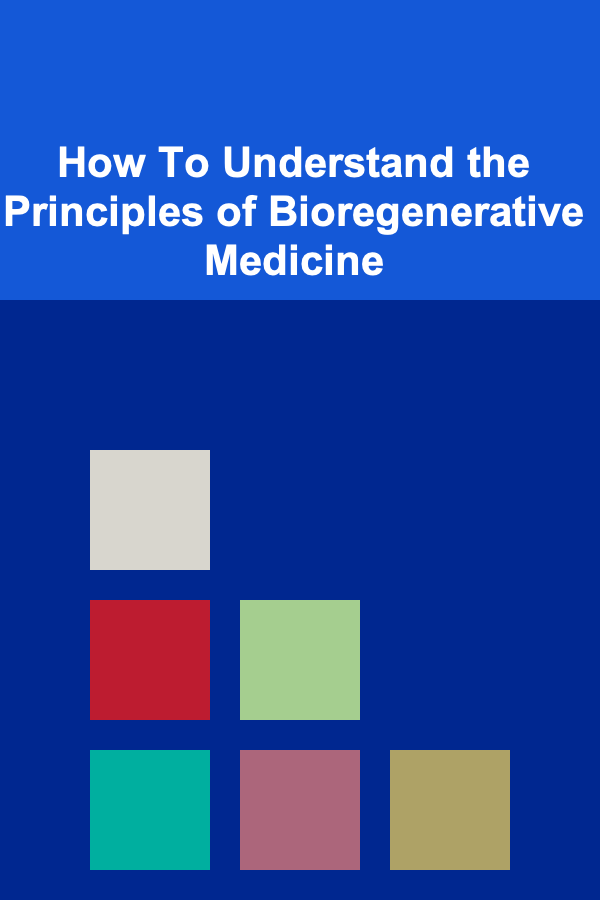
How to Address Neck Pain and Headaches with Chiropractic
ebook include PDF & Audio bundle (Micro Guide)
$12.99$5.99
Limited Time Offer! Order within the next:
Not available at this time

Neck pain and headaches are common issues that affect millions of people worldwide. While many seek relief through medication or traditional methods such as physical therapy, chiropractic care is an increasingly popular option for those dealing with these ailments. Chiropractic treatments aim to address the underlying causes of neck pain and headaches, rather than simply masking the symptoms. By focusing on the alignment of the spine and the proper functioning of the nervous system, chiropractic care offers a holistic and effective approach to healing.
In this article, we will explore how chiropractic care can help alleviate neck pain and headaches, the connection between these conditions and spinal health, and the various chiropractic techniques and treatments that can be used to address them.
Understanding the Link Between Neck Pain, Headaches, and Spinal Health
The neck, or cervical spine, plays a crucial role in supporting the head and facilitating movement. It is made up of seven vertebrae, ligaments, muscles, and nerves that allow for a wide range of motion. However, due to its complexity and mobility, the neck is also prone to various injuries and misalignments, which can lead to pain and discomfort.
Neck pain can be caused by a number of factors, including poor posture, repetitive stress, trauma (such as whiplash), muscle strain, or degenerative conditions like arthritis. In some cases, neck pain can trigger headaches, as tension in the neck muscles and misalignments in the cervical spine can affect the nerves that control head and facial pain.
Headaches, especially tension headaches and migraines, can often be linked to spinal misalignments or "subluxations." These misalignments can irritate the nerves, leading to inflammation, muscle tension, and increased sensitivity, which can result in painful headaches. Chiropractic care addresses these misalignments through spinal adjustments, helping to restore normal function and alleviate pain.
How Chiropractic Care Can Help with Neck Pain
Chiropractors are healthcare professionals trained to diagnose and treat musculoskeletal conditions, with a particular emphasis on the spine. The cornerstone of chiropractic care is spinal manipulation, or spinal adjustments, which aim to correct misalignments (subluxations) in the spine and restore proper movement. This treatment can help alleviate neck pain by addressing the root causes of discomfort, rather than simply providing temporary relief.
1. Spinal Adjustments for Cervical Subluxations
One of the primary causes of neck pain is the misalignment of the cervical spine. Subluxations occur when one or more vertebrae in the neck are out of position, putting pressure on the surrounding nerves and soft tissues. This can lead to inflammation, pain, stiffness, and reduced range of motion. Chiropractic spinal adjustments are designed to realign the vertebrae, reducing pressure on the nerves and restoring normal function.
During a spinal adjustment, the chiropractor uses precise manual techniques to apply controlled force to the affected area of the spine. This can help improve alignment, reduce inflammation, and relieve tension in the muscles and joints of the neck. In many cases, patients experience immediate relief from pain and improved mobility following an adjustment.
2. Improving Posture and Spinal Alignment
Poor posture is another common cause of neck pain. Slouching or leaning forward for extended periods can place undue strain on the neck muscles and contribute to spinal misalignments. Chiropractors work with patients to identify postural issues and develop strategies for improving posture, which can help reduce neck pain over time.
By addressing posture, chiropractors help ensure that the spine remains in its optimal position, reducing strain on the neck and surrounding muscles. Additionally, chiropractors often provide ergonomic advice and recommend exercises to strengthen the muscles that support the neck, further preventing future pain.
3. Soft Tissue Therapies
In addition to spinal adjustments, chiropractors may use soft tissue therapies to treat neck pain. These techniques focus on relaxing and healing the muscles, tendons, and ligaments in the neck, which can become tight or inflamed as a result of misalignments or injury. Common soft tissue therapies include:
- Massage Therapy: Therapeutic massage can help relieve muscle tension, improve circulation, and promote healing in the neck and upper back.
- Myofascial Release: This technique targets the fascia (the connective tissue surrounding muscles) to release tightness and improve range of motion.
- Trigger Point Therapy: This method involves applying pressure to specific points in the muscles to relieve localized pain and tightness.
These soft tissue therapies can complement spinal adjustments and help provide more comprehensive relief from neck pain.
How Chiropractic Care Can Help with Headaches
Headaches, particularly tension headaches and migraines, are often linked to spinal misalignments and neck issues. Chiropractic care can help address the underlying causes of headaches by focusing on the spine, nervous system, and muscle tension. By correcting spinal misalignments and improving overall spinal health, chiropractors can help reduce the frequency and severity of headaches.
1. Cervical Spine Adjustments for Headache Relief
Research has shown that cervical spinal adjustments can be highly effective in reducing headache frequency and intensity. Misalignments in the cervical spine can irritate the nerves that control pain signals in the head, leading to tension and headaches. By realigning the cervical vertebrae, chiropractic adjustments help alleviate pressure on these nerves, reducing pain and preventing the onset of headaches.
A study published in the Journal of Manipulative and Physiological Therapeutics found that chiropractic spinal adjustments significantly reduced the frequency and intensity of tension headaches in patients. Many patients also reported improvements in their overall quality of life after chiropractic care.
2. Reducing Muscle Tension
Tension in the muscles of the neck and upper back is a common trigger for headaches. When the muscles become tight or fatigued, they can cause referred pain that radiates to the head. Chiropractic care, including spinal adjustments and soft tissue therapies, can help relax the muscles in the neck and upper back, reducing the tension that leads to headaches.
Chiropractors may use massage therapy, stretching exercises, and other techniques to address muscle tightness and promote relaxation. In addition, chiropractors can recommend lifestyle changes, such as improving posture and managing stress, to further reduce muscle tension and prevent headaches.
3. Addressing Nerve Irritation
The spinal nerves that exit the cervical spine control various functions in the head and neck, including the muscles, blood vessels, and pain receptors. When these nerves become irritated due to misalignments or subluxations in the cervical spine, they can contribute to headaches.
Chiropractic adjustments aim to restore normal nerve function by realigning the vertebrae and reducing pressure on the nerves. This can help alleviate the symptoms of headaches and promote overall health and well-being.
4. Migraine Relief
While migraines have a variety of causes, including genetics and environmental factors, chiropractic care has been shown to be effective in reducing the frequency and intensity of migraines. For some individuals, spinal misalignments and nerve irritation may play a role in triggering migraines. Chiropractic adjustments can help address these issues and reduce the likelihood of a migraine attack.
A study published in the Journal of Manipulative and Physiological Therapeutics found that chiropractic care led to significant improvements in migraine patients, with many experiencing fewer and less severe migraines after receiving spinal adjustments.
Complementary Chiropractic Techniques for Neck Pain and Headaches
In addition to spinal adjustments, chiropractors may use several complementary techniques to address neck pain and headaches. These treatments focus on improving overall spinal health, relieving muscle tension, and promoting relaxation.
1. Exercise and Stretching
Chiropractors often recommend specific exercises and stretches to strengthen the muscles that support the neck and spine. Strengthening these muscles can improve posture, reduce strain on the neck, and help prevent future pain and headaches.
Common exercises recommended by chiropractors include:
- Neck Strengthening Exercises: These exercises focus on building strength in the muscles that support the neck, reducing the risk of injury and improving overall spinal stability.
- Stretching: Gentle stretching exercises help maintain flexibility in the neck and upper back, reducing stiffness and tension that can lead to headaches.
- Postural Exercises: These exercises are designed to improve posture, which can help reduce strain on the neck and prevent misalignments that contribute to pain and headaches.
2. Lifestyle and Ergonomics
Chiropractors often provide advice on improving lifestyle habits and ergonomics to prevent neck pain and headaches. This may include tips on maintaining proper posture while sitting, standing, and sleeping, as well as recommendations for using ergonomic furniture and equipment.
For example, chiropractors may advise patients on the importance of adjusting their computer screen height, using a supportive pillow, and taking regular breaks to reduce the risk of neck strain and tension headaches.
3. Nutritional Support
Nutrition plays an important role in overall health and well-being, and chiropractors may offer dietary recommendations to support the healing process. Certain nutrients, such as magnesium and omega-3 fatty acids, have been shown to help reduce muscle tension and inflammation, which can contribute to neck pain and headaches.
In some cases, chiropractors may also recommend supplements or lifestyle changes to support the body's natural healing processes.
Conclusion
Chiropractic care offers an effective and holistic approach to addressing neck pain and headaches. By focusing on spinal health, nerve function, and muscle tension, chiropractors can help alleviate the underlying causes of these conditions, providing long-term relief for patients. Whether through spinal adjustments, soft tissue therapies, or lifestyle recommendations, chiropractic care offers a comprehensive solution for those suffering from neck pain and headaches.
If you are experiencing chronic neck pain or frequent headaches, chiropractic care may be a valuable part of your treatment plan. Consult with a qualified chiropractor to determine the best approach for your specific needs and begin your journey toward improved health and well-being.

How to Create a Pet-Friendly Holiday Environment
Read More
How to Create Family Traditions Around Holidays and Special Occasions
Read More
How To Understand the Principles of Bioregenerative Medicine
Read More
How To Optimize Your Marketing for Mobile
Read More
How to Manage Your Investments in Retirement
Read More
Designing Presentations That Resonate
Read MoreOther Products

How to Create a Pet-Friendly Holiday Environment
Read More
How to Create Family Traditions Around Holidays and Special Occasions
Read More
How To Understand the Principles of Bioregenerative Medicine
Read More
How To Optimize Your Marketing for Mobile
Read More
How to Manage Your Investments in Retirement
Read More